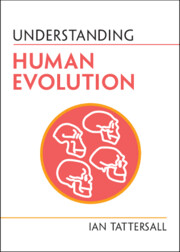Book contents
- >Understanding Human Evolution
- Series page
- Understanding Human Evolution
- Copyright page
- Reviews
- Dedication
- Frontispiece
- Contents
- Maps
- Foreword
- Preface
- Acknowledgments
- 1 Evolution
- 2 Technology: Dating, Diets, and Development
- 3 Discovery and Interpretation of the Human Fossil Record: The Early Days
- 4 Discovery and Interpretation of the Human Fossil Record: Later Developments
- 5 Early Bipeds
- 6 The Muddle in the Middle
- 7 Homo heidelbergensis and the Neanderthals
- 8 The Emergence and Spread of Homo sapiens
- Epilogue
- Summary of Common Misunderstandings
- References and Further Reading
- Figure Credits
- Index
2 - Technology: Dating, Diets, and Development
Published online by Cambridge University Press: 21 July 2022
- >Understanding Human Evolution
- Series page
- Understanding Human Evolution
- Copyright page
- Reviews
- Dedication
- Frontispiece
- Contents
- Maps
- Foreword
- Preface
- Acknowledgments
- 1 Evolution
- 2 Technology: Dating, Diets, and Development
- 3 Discovery and Interpretation of the Human Fossil Record: The Early Days
- 4 Discovery and Interpretation of the Human Fossil Record: Later Developments
- 5 Early Bipeds
- 6 The Muddle in the Middle
- 7 Homo heidelbergensis and the Neanderthals
- 8 The Emergence and Spread of Homo sapiens
- Epilogue
- Summary of Common Misunderstandings
- References and Further Reading
- Figure Credits
- Index
Summary
Within the lifetimes of some of today’s older paleontologists, the armamentarium available to those who studied fossils was pretty limited, consisting mainly of hands, brain, and a rock hammer. A fossil, by the way, is any evidence of past life: An ancient footprint or worm burrow is technically a fossil, although as far as mammals like us are concerned the vast majority of fossils are the mineralized remains of bones and teeth. These are the hardest tissues of the body, and thus have the best chance of being preserved in the rock record. For reference, Figure 2.1 shows a human skeleton with the major bones identified.
Keywords
- Type
- Chapter
- Information
- Understanding Human Evolution , pp. 18 - 33Publisher: Cambridge University PressPrint publication year: 2022

